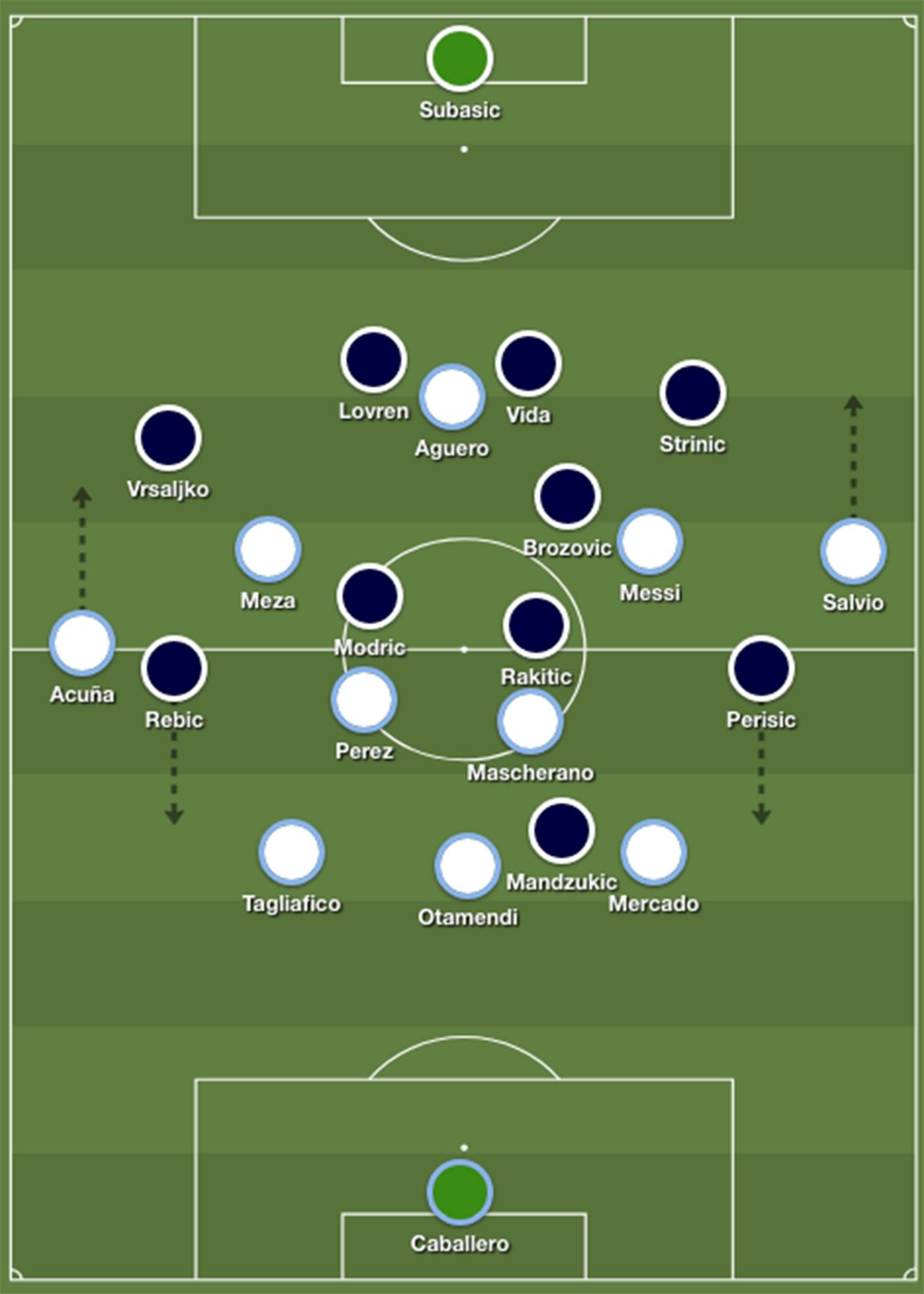World Cup 2018: Jorge Sampaoli's approach was an utter disaster that rendered Lionel Messi useless
The former Chile coach got everything disastrously wrong and could cost Argentina everything

There was always a danger Argentina might flop at World Cup 2018, but it shouldn’t have been this pitiful. If Argentina were going to go down, they were going to go down fighting, with coach Jorge Sampaoli a noted advocate of aggressive pressing, attacking football and quick combination play. If those tactics exposed them defensively, it was a risk Sampaoli was willing to take.
But the approach Sampaoli stumbled upon somehow provided all the drawbacks without any notable positives. Argentina didn’t press high, they didn’t attack relentlessly, and it’s difficult to recall any passing moves worth mentioning, yet they were still hopelessly open defensively, conceding space on the outside of their three-man defence readily. Only poor Croatian finishing prevented them from taking the lead earlier.
The three-man defence itself was a major problem. Sampaoli regularly used a three-man defence when in charge of Chile, often with great success, but had seemingly decided Argentina lacked the players to perform in that manner, using a four-man defence in the 1-1 draw with Iceland. Here, Argentina reverted to the three-man defence, but found themselves incapable of covering the width of the pitch.

Croatia’s two wide players, Ivan Perisic and Ante Rebic, frequently broke in behind wing-backs Eduardo Salvio, a converted midfielder, and left-sided Marcos Acuña, a winger for Sporting Lisbon. Both were more concerned with pressing the Croatian full-backs rather than dealing with the wingers, and therefore Zltako Dalic’s team created chances incredibly easily.
Inside five minutes a hopeful long ball was flicked on by Ivan Rakitic into the path of Perisic, whose shot was saved well by Willy Caballero. Shortly afterwards Perisic switched play to the galloping right-back Šime Vrsaljko, completely unmarked at the far post, but he miscued his volleyed cross. Vrsaljko then teed up Mario Mandzukic with a fine diagonal cross after the big centre-forward had made a run from a left-wing position, although his header was unusually poor. The space in behind Salvio was Argentina’s main problem, with Luka Modric’s curled, crossfield ball in behind finding Rebic, briefly on the left, running in behind. A poor first touch meant the chance was wasted.
Where, though, did Argentina have the upper hand? Certainly not in midfield, where Javier Mascherano and Enzo Perez were, predictably, second-best to Rakitic and Modric in terms of possession play, but more alarmingly completely overawed in terms of physicality, with the Croatian duo pushing up and pressing energetically when Argentina attempted to play over the halfway line. Having played as a deep-lying duo in the opening victory over Croatia, here Modric and Rakitic were allowed to play higher thanks to the introduction of Marcelo Brozovic. It helped them take the game to Argentina, and later enabled them both to get onto the scoresheet.
Argentina’s build-up play was dreadful, overly dependent upon Nicolas Otamendi to play ambitious long balls into the final third. Leo Messi, playing in a familiar inside-right zone but in a completely unfamiliar system, swapped a couple of chances with the overlapping Salvio, but nothing about Argentina’s system helped him advance into dangerous positions.

Sergio Aguero isn’t the type of centre-forward who comes towards play to allow Messi to play one-twos, and the absence of proper width meant Croatia’s defenders played narrow and crowded him out when needed. Aside from a baffling Croatian defensive mix-up midway through the first half, which presented Perez with an open goal he somehow contrived to miss, Argentina simply never looked like scoring.
Croatia eventually went ahead through Rebic’s clinical volley after Caballero had hopelessly looped the ball up in front of him, as Argentina attempted to play out from the back. It was the third hopeless concession of possession inside their own box in Argentina’s first two games, and they were fortunate not to be punished sooner. Players of this meagre calibre – and, for all the tactical problems, this is a deeply average starting XI individually – simply aren’t capable of playing in that manner. M
odric’s curler was a fitting piece of individual brilliance from the game’s best performer, while Rakitic deserved his goal after a wonderful performance that involved switching play regularly to exploit Argentina’s weakness down the flanks.
Argentina are not yet eliminated from this tournament, and Sampaoli will – presumably – have another group game to rectify things. But this was a truly disastrous approach that offered nothing: neither the defensive solidity of Alejandro Sabella’s structured approach that got Argentina to the final four years ago, nor the attacking invention which Sampaoli had promised
Join our commenting forum
Join thought-provoking conversations, follow other Independent readers and see their replies
0Comments